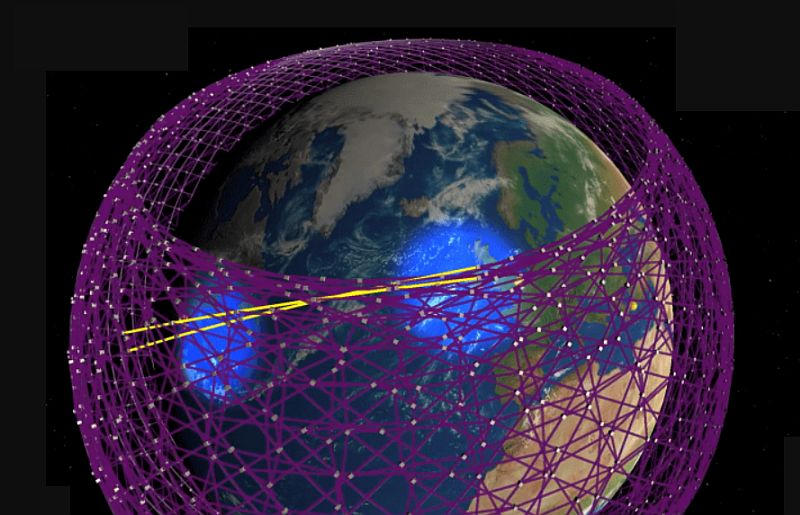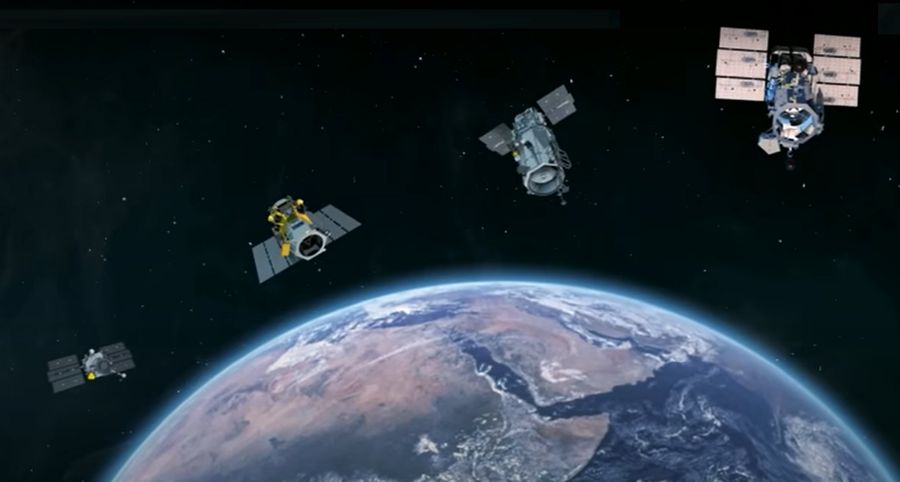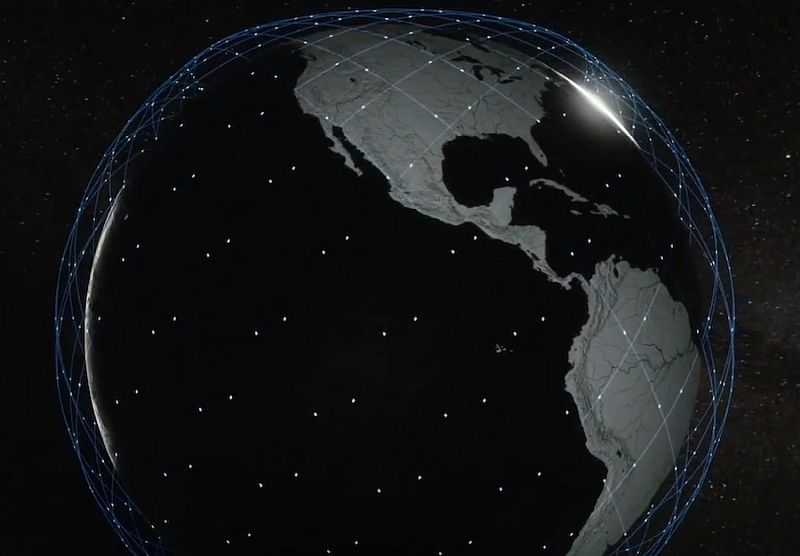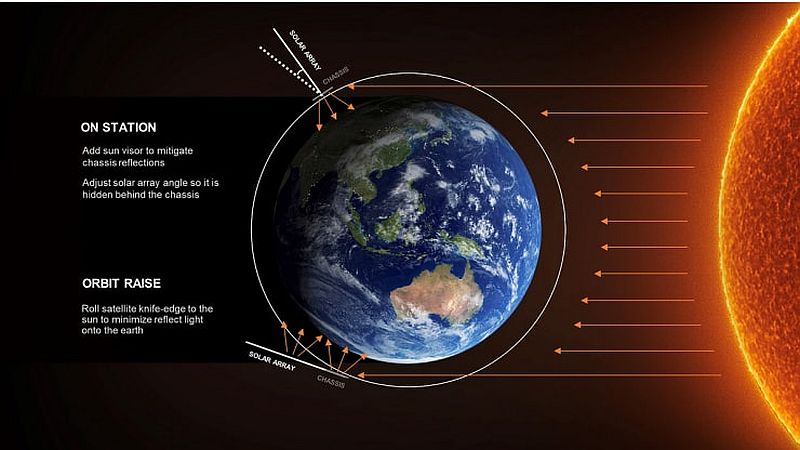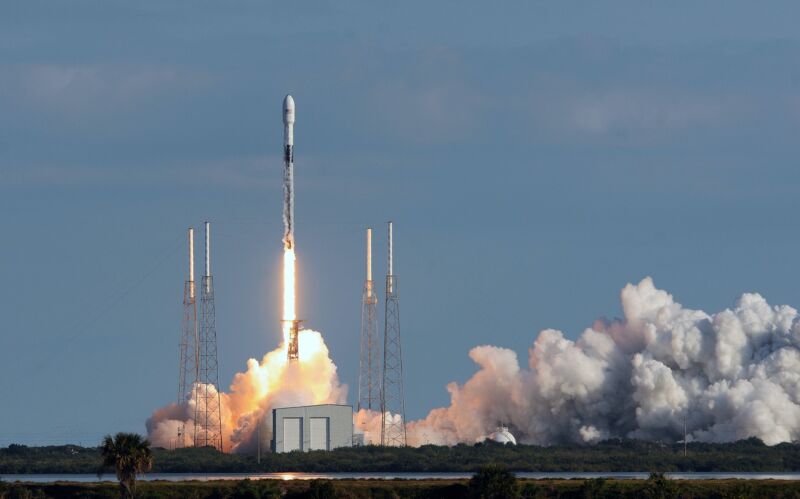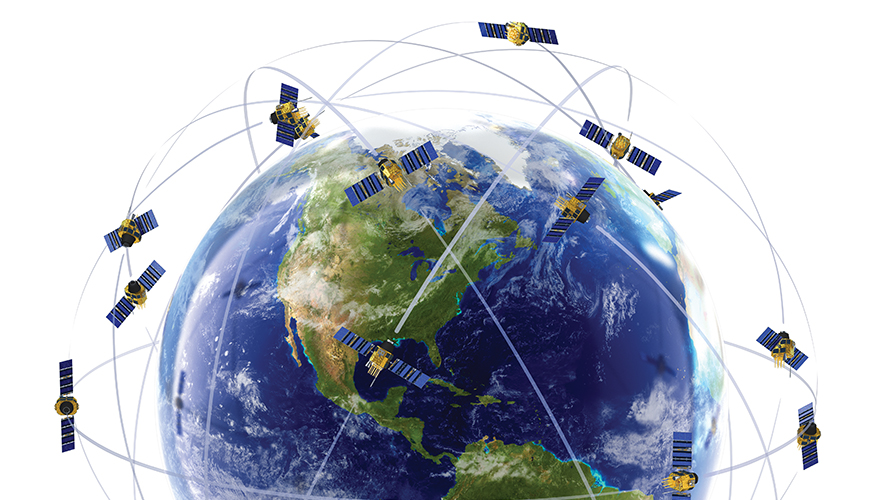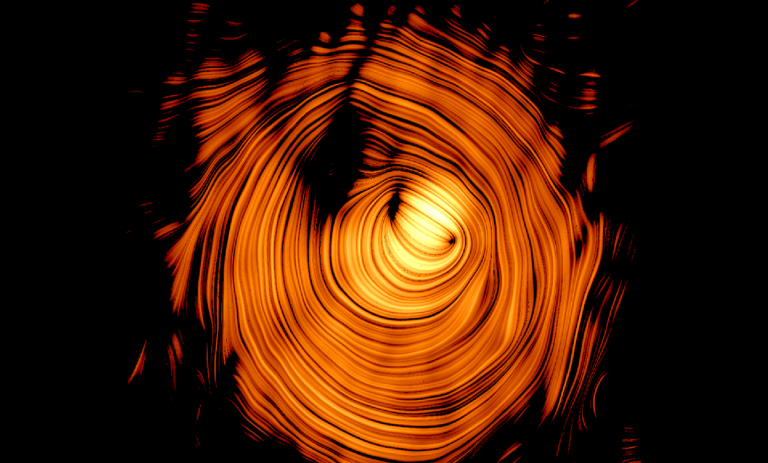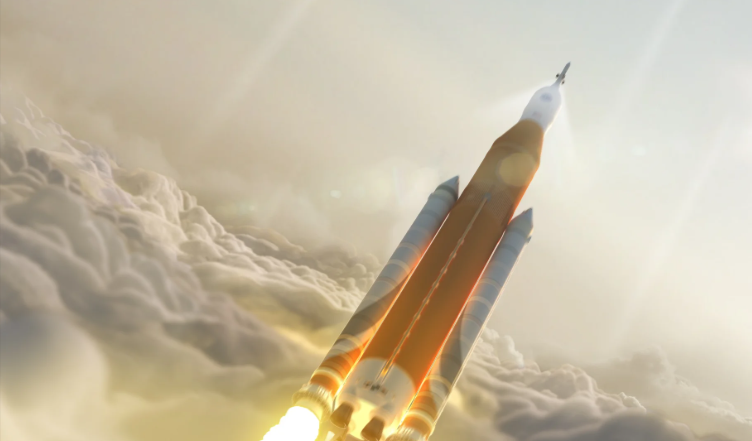Our devices might never go out of internet coverage area. Musk plans to provide global internet connection to everyone and anywhere in the world. Connectivity speed too will be above average, that is, more than home WIFI (50Mb/s).
How? Orbital internet constellation, the Starlink, is the answer.
SpaceX backed Starlink is one of Musk’s dream project. It aims at fabricating a huge constellation – nearly 12,000 – of satellites that will sit in low orbit over Earth.
Positioned at different altitudes, each will act as node and communicate with each other via lasers. This technique will give impressive upgrade to internet service globally.
If everything goes as per his plan, along with the FCC’s (Federal Communications Commission) approval, by 2025 Earth will get surrounded by 12,000 of his satellites. And the final result will be a mesh of staggering 42,000 satellites.
The U.S. military has already expressed its interest in SpaceX’s mega constellation of satellites as it maintains hundreds of oversea bases.
Light pollution
Whatever the potential benefits of such orbital internet constellation, one of the major impacts would be light pollution.
As numerous Starlink satellites float in space, it would greatly influence the astronomical observations. Both in the optical wavelength and further down the spectrum in the radio bands.
Also, the mesh would make astronomical images useless by leaving long luminous trails.
In Satellite 2020 conference Elon Musk dismissed those worries. As per him, his satellites will be painted black to avoid bouncing back any harm to astronomical research.
However, the first observations and magnitude measurement of Starlink’s Darksat (1130) and STARLINK-1113, were not convincing.
Also, the satellites are not in their final orientation as was warned by SpaceX before launch. Once they enter into their final orbits, their brightness will be more due to the orientation of the solar panels.
In the next lot of modification, SpaceX is trying to make satellites less luminous once they enter their operational altitude and begin on station service. But the “less luminous” figure is still bright for astronomers’ highly sensitive instruments.
The world’s most advanced visible-light astronomical observatory can observe stellar objects four billion times fainter than that threshold.
Space traffic jams
The low Earth orbit space is already dedicated to the International Space Station (ISS). Also, some space is allotted to other satellite operators for scientific, remote-sensing and telecom distribution.
Now, a fleet of new satellites would increase the risk of space collisions. This congestion might also lead to multiplication of space debris.
A similar situation occurred last year in September, European Space Agency (ESA) had to perform a ‘collision avoidance manoeuvre‘ to protect one of its spacecrafts from colliding with a SpaceX satellite in the Starlink constellation.
Musk claims that satellites within the Starlink are furnished with thrusters that’ll help them orient back on Earth once they finish their active life.
However, their operational risk of potential space traffic jams still persists.
Increase in debris and space congestion
Musk and his team have repeatedly said that some of the satellites will not meet expected success.
Since the first launch in May 2019, six Starlink satellites have already failed. If just 5% of these satellites tumbledown before the expected lifecycle of five to seven years, the overall percentage of space debris would grow exponentially.
According to NASA’s Orbital Debris, quarterly news, the Space Surveillance Network (SSN) currently maintains a catalogue of over 20,000 objects, including spacecraft, rocket bodies, and debris, from low Earth orbit (LEO) to beyond geosynchronous Earth orbit (GEO).
As per initial plans of Starlink network, twenty five percent of constellation were to be placed at the altitude of 1,110 km. While about 1,600 satellites were to be positioned at 550 km instead of 1,150 km.
On April 2020, SpaceX came up with new modified plan, accordingly, the new satellites will operate between 540 km and 570 km.
This might lessen the risk of broken-down satellite debris floating in high-earth orbit for ages but leads to an increase in overcrowding in the low Earth orbit region.
Huge amount of raw materials and energy is involved maintaining such a gigantic network of satellites.
Other equally important yet demanding parameters are operational risks, building, launching and affordability to masses.
In order to meet the economical factor, they would have to be mass produced. And SpaceX is now licensed to deploy 1 million satellite-broadband user terminals. For starters.
IoT in 2020 and beyond
Musk is not alone, Bezos’ Kuiper, Wyler’s OneWeb and China’s Hongyan are also active participants in this space race.
Once they all rush into massive production, the results would be far from disaster. It does not only entail environmental catastrophe but security and business as well.
OneWeb has already announced for bankruptcy protection. Also, it has reduced its workforce after their efforts failed to raise additional money to fund the company’s satellite constellation.
Till date OneWeb have deployed nearly 650 satellites to beam Internet signals worldwide.
Whoever amongst the giants win the real estate in space, will take the sole charge of IoT in 2020 and beyond. We can surely expect to see incredible new innovations changing the way we communicate and work.

